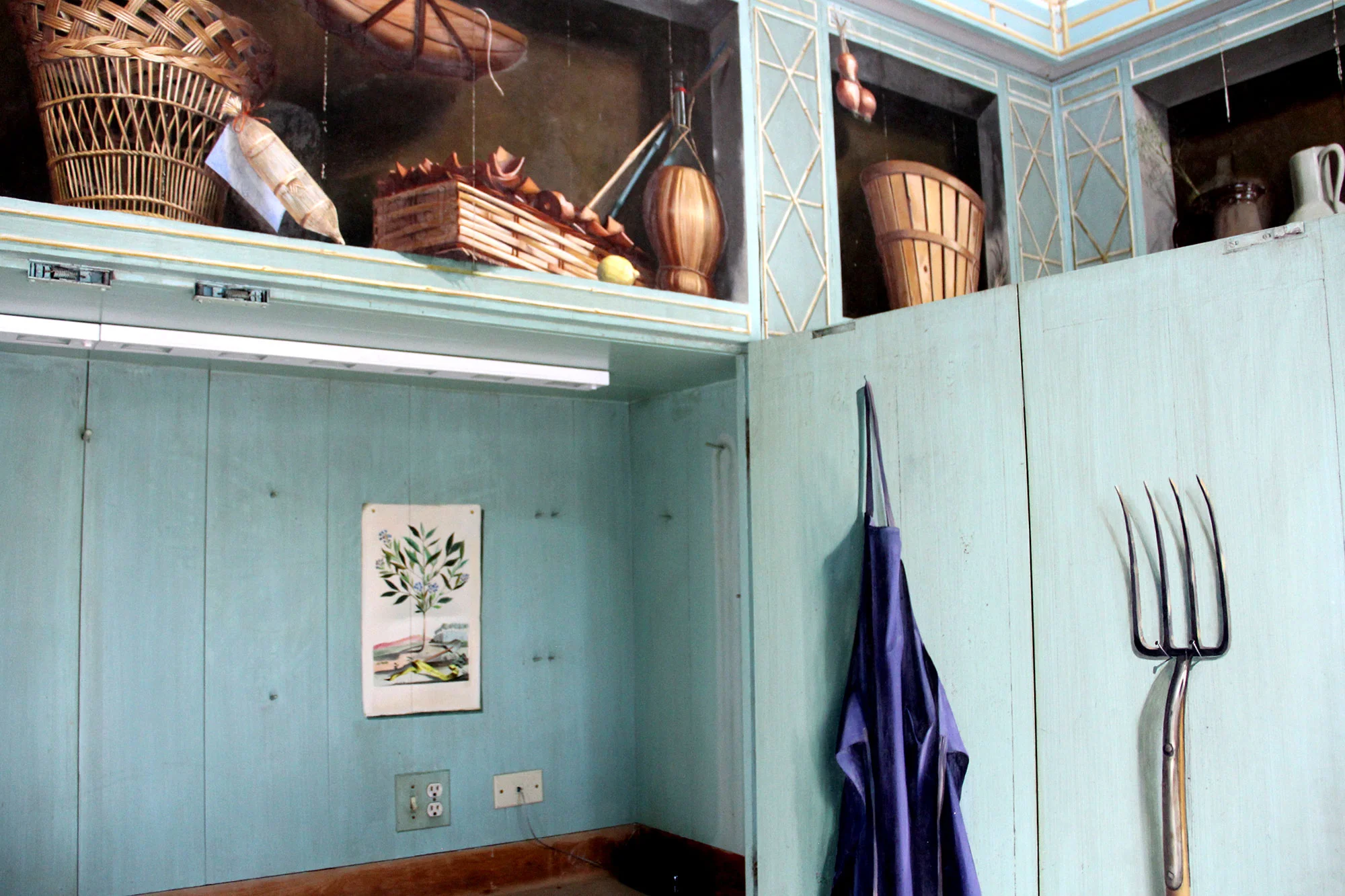Bunny Mellon's Library Favorites: Inside the Phytographia curiosa
OSGF
A look inside the pages of one of Bunny Mellon’s favorite objects in the Oak Spring Garden Library: Mellon admired Abraham Munting’s strawberry-tree illustration so highly that artist Fernand Renard included it in her trompe l’oeil on the walls of her famous greenhouse, with her name inscribed in the yellow ribbon.
Abraham Munting’s Phytographia curiosa combines botanical science with the artistry of Munting’s imagination. The illustrations were notable for their elegance and the unique images Munting depicted in the landscapes of his work. Despite his scientific background, Munting illustrated pastorals with animals and figures unrelated to the plant’s natural habitat. It is not known how Munting conceived the idea of combining flora with seemingly unrelated scenes, but one possibility is that he was commissioned to create such works.
The hand coloring in this copy of Phytogrophia curiosa generally elaborates on scientific fact with inventiveness, as may be seen in the illustration of the “Arbutus Humilis Virginiana” (Arbutus unedo or strawberry-tree), which bears bizarrely tinted flowers and light-blue berries. Particularly for an artist with a scientific and chemical background, Munting demonstrated a commitment to his own imagination, adding whimsy to his botanical artwork.
The 245 engraved and hand-colored plates in Bunny Mellon’s Latin edition were purchased in 1957 and was one of her favorite works in the Oak Spring Garden Library. The book was not published until thirteen years after its author’s death, but a Latin edition followed in 1702, its text reduced to little more than a list of names, and this was popular enough to be reprinted in 1713 and again in 1727. A copy of the first edition from 1696 and an edition published by Peter de Coup in 1727 in Amsterdam are also at Oak Spring.
During Munting’s life, he traveled extensively, visiting England, Germany, and Italy, and spending a considerable amount of time in France, where he was admired for his studies. When he returned to Groningen, he started a career as an esteemed professor of botany and chemistry at the university, where he taught for more than 24 years. There, he founded one of the most extensive botanical gardens of the period, known as the “Paradise of Groningen,” which he directed from 1658 up until his death in 1683.
These pieces departed from traditional flora, presenting plant species against a series of landscape backgrounds. Munting’s unique depictions made his collection a personal favorite of Bunny Mellon’s, who looked through the collection often.
You can try your own creativity with Munting's Phytographia curiosa by downloading our Oak Spring coloring book.




